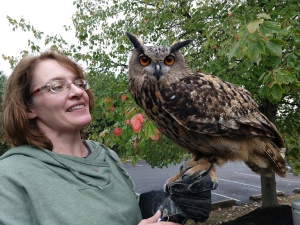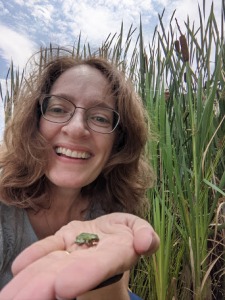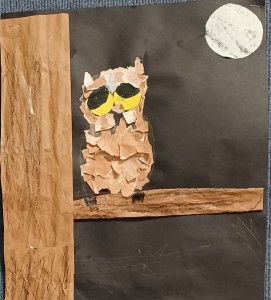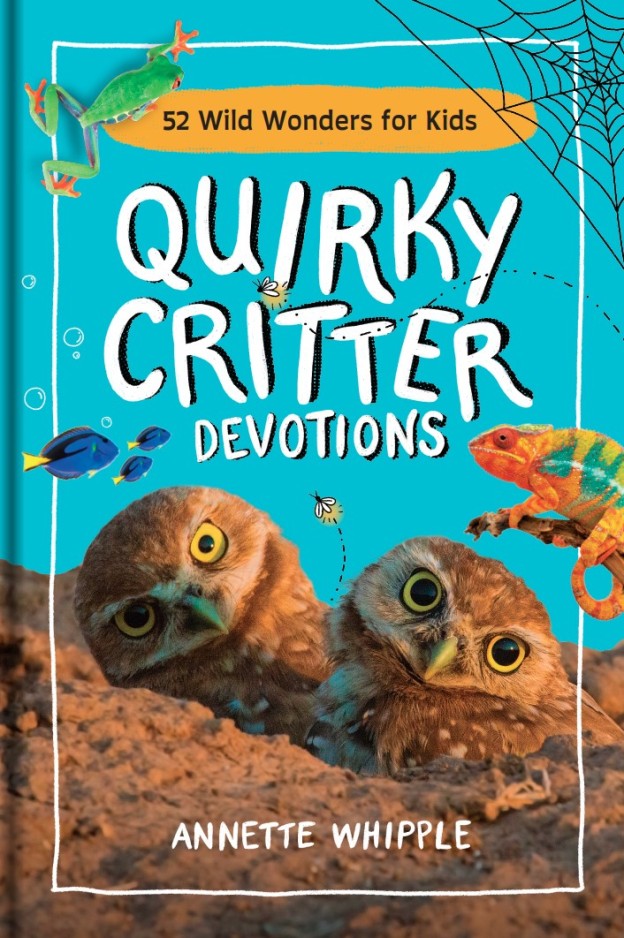Molly and I are thrilled to welcome Annette Whipple back to our blog. Annette is the author of a number of excellent nonfiction books for children. She loves to research and find facts that captivate children, and I use several of her Truth About books in my elementary art classes.
Annette has a new book out that combines her love of nature and her Christian faith, and Molly and I think you’ll love Quirky Critters, 52 Wild Wonders for Kids, published by Tyndale!
Kathy and Molly: We’ve been reading your new book, Quirky Critters, and we love all the interesting information. Would you tell us a little about how you came to write it?
Annette: I actually transformed one idea multiple times to come up with Quirky Critter Devotions: 52 Wild Wonders for Kids! These weren’t just major revisions. Instead one idea prompted a different idea over eight years! I wrote a detailed blog post about the process here.
https://www.annettewhipple.com/2024/02/a-story-of-triumph.html
Kathy and Molly: Isn’t is amazing how our ideas can transform! Do you have any favorite quirky critters?
Annette: I really struggle to say just one favorite quirky critter! However, I’ve always loved fireflies and owls. But the more I learn about an animal, the more I appreciate it! I had the hardest time limiting the devotional to only 52 animals.

Kathy and Molly: Owls are sooo amazing, and I know you love frogs, too! It must have been hard to choose just 52 critters, but we like the ones you chose. We also love that each critter can teach us something about our awesome God. Do you have one or two suggestions for how readers can really focus in on the biblical message?
Annette: The devotions have lots of animal facts and a faith connection. I do hope readers will take advantage of the faith-related journal entries as well as the printable Quirky Critter Questions cards that have additional questions—one about the animals and one that’s personal for each of the animals. In addition to the Bible verses included in the devotions, I hope readers will spend time reading the Bible, too. That’s the very best way to connect with God! The question cards are found at https://www.annettewhipple.com/2024/02/quirky-critter-question-cards-printable.html.
Kathy and Molly: You’re so right—reading the Bible is definitely the best way to connect with God! The Question cards look wonderful! Molly wants to try every activity. If families are reading these devotions together, how can they make it a fun family time?
Annette: I’ve heard of many families completing Quirky Critter Devotions together! Many read the main devotion as a family, as well as the Wild Wonder, verse, and prayer. I know one family who purchased individual copies for the children because each of the children were so passionate about animals. Some discuss the journaling portion while others write some ideas as a family. Many activities are great family activities! I’d suggest one person review the activity in advance and make a plan to include everyone.
Kathy and Molly: Those are terrific ideas! Would you tell readers where they can find their very own copies of Quirky Critters and about the downloadable Question Cards?
Annette: All of my books are available wherever books are sold! Just ask your local bookstore for the book of your choice, like Quirky Critter Devotions: 52 Wild Wonders for Kids. They’re also available online! https://www.annettewhipple.com/p/books.html]
You can even take a peek at my next book! Chomp! The Truth About Sharks is now available for pre-order, too!
The downloadable Quirky Critter Question Cards are absolutely free—no email needed! Print them at https://www.annettewhipple.com/2024/02/quirky-critter-question-cards-printable.html.
I’m so grateful to hear you’re enjoying my first faith-based book! I had a ton of fun researching and writing Quirky Critter Devotions: 52 Wild Wonders for Kids!
Kathy and Molly: Thank you so much, Laura, for telling us and our readers about Quirky Critters! Molly and I think it’ll be a great book for summertime fun and for building children’s faith!
Picture of Molly the Artsy Corgi investigating a Quirky Critter–a painted lady butterfly. And here’s a student art project based on Annette’s book, Whoo Knew, The Truth about Owls.

Before You Go
If you’d like more activity ideas for art, history, and nature, curriculum connections, and links to more resources, be sure to sign up for my newsletter and receive a free guide, 5 Ways Art Benefits Children’s Cognitive, Physical, Spiritual, and Social Development, You’ll also get a Few Fun and Easy Activities for each Benefit.
Visit Molly’s and my website where you’ll find free downloadable puzzles, how-to-draw pages and coloring pages for kids and an updated list of my hands-on workshops, chapels, and presentations for all ages.







 But she soon learned to love us and
But she soon learned to love us and  her toys!
her toys!































 How did you come up with the idea for this series and for this book about prayer?
How did you come up with the idea for this series and for this book about prayer? 


















